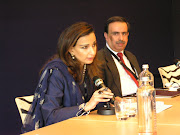THE Al-QAEDA CONNECTION, The Taliban and Terror in Pakistan's Tribal Areas,Imtiaz Gul, Viking
The British Empire had only one answer for the problems of the tribal areas of the North West Frontier: leave them alone, as much as possible. A political agent, with a minimalist agenda, relied on the malik and occasionally the mullah to ensure that the tribal agencies were virtually sovereign within, but insulated from much of the outside world.
The combination of Pakhtunwali (tradition) and Shariah (Islamic laws) that prevailed was documented by serious anthropologists in research studies and civil servants in imperial gazetteers and often alarmed liberals. But until recently, the Federally Administrated Tribal Areas (FATA) were a no-go zone, a Wild West. Until the implosion in these areas, few even in India’s strategic elite knew of the complexities of the FATA.
Gul’s masterly account is important not just for sketching in fine detail the manner in which Al Qaeda found a fertile ground in many of these areas, but also for profiling each one of the seven agencies of FATA and six pockets known as the Frontier Regions. The agencies are, of course, North Waziristan, South Waziristan, Khyber, Kurram, Bajour, Mohmand and Orakzai. And the regions are Peshawar, Kohat, Bannu, Lakki, Tank and Dera Ismail Khan. So for all those instant Pakistan experts, here is a chance to read Gul’s book and become a real expert.
Gul documents, with painstaking detail, how many of these areas fell victim to the Al Qaeda and the Taliban after the latter were forced out of Afghanistan. A combination of big money, the
seductive power of radical Islam and the de facto
patronage of elements of Pakistan’s establishment created the conditions for Al Qaedism to find roots in FATA.
But there are three other parts of Gul’s extraordinary study which demand attention. First is the growing nexus between most militant groups operating in Pakistan and Kashmir with the Taliban and the Al Qaeda. It is the tribal areas which serve as a perfect sanctuary. For instance, after Lashkar-e-Taiba came under pressure in Punjab, they moved a number of their camps to Waziristan and Mohmand agencies, “where they lived close to the compounds of the Arab Al Qaeda, whose ideological leanings — the Sunni Wahabist version of Islam — they shared.”
Gul’s book also examines the continued linkages between the Inter-Services Intelligence (ISI) and many of these groups, including the Taliban.
As is well known, during the Soviet occupation of Afghanistan, the ISI used American and Saudi money to train and motivate many of these groups. But even after 9/11, the relationship is far from over. The ISI, many believe, is convinced that the West will abandon Afghanistan in a few years,
and then these “strategic assets” will need to be reactivated.
For instance, as Gul states: “after their retreat from Afghanistan, the majority of foreigners had settled down in the North and South Waziristan and Bajaur region, where networks operated by Afghan war veterans Jalaluddin Haqqani and Gulbudin Hekmetyar became instrumental in securing shelter for bin Laden’s surviving fighters. Haqqani and Hekmetyar also acted as the umbrella group for the reorganisation of the Al Qaeda.” Both Hekmatayar and Haqqani are still considered to be ISI’s important assets with the latter blamed for the bombing of the Indian embassy in Afghanistan.
Finally, Gul documents, somewhat sketchily, the game being played by other powers, including by the Americans, the Saudis and the Indians.
But what is the way out? Can Afghanistan be stabilised as a precursor to stabilising the tribal areas? King Nadir Shah of Afghanistan said in 1931: “In my opinion, the best and most fruitful policy that one can imagine for Afghanistan is a policy of neutrality. Afghanistan must always entertain good relations with its neighbours as well as all the friendly powers that are not opposed to the national interest of the country. Afghanistan must give its neighbours assurances of its friendly attitudes while safeguarding the right of reciprocity. Such a line of conduct is the best one for the interests of Afghanistan.” In other words, the only way out is for Afghanistan’s neighbours and the great powers to guarantee its neutrality.
As Karl Inderfurth wrote a few months ago: “Such a package would give all the participants something of value. Pakistan would secure Afghan recognition of its border and assurances that India would not be allowed to use Afghan territory to pressure or destabilise Pakistan’s volatile border regions. India would be free to pursue normal relations with Kabul, including direct trade and commercial ties. Iran would receive assurances that the international community recognises its legitimate interests in Afghanistan and that the US military presence on its eastern border is not permanent. The United States and its allies would be able to depart, leaving behind a society at peace with itself and its neighbours.”
But until that happens, Imtiaz Gul’s frightening and fascinating book, which blends reportage with genuine scholarship, is essential reading for all those who care for the region.







No comments:
Post a Comment